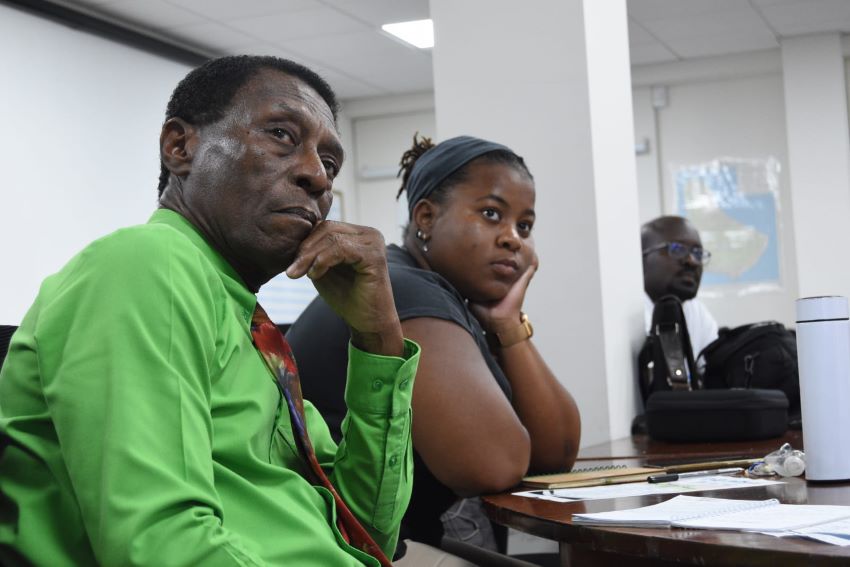
Several myths about the tsunami hazard were debunked during a media sensitisation workshop on the island’s Tsunami-Ready Recognition Programme recently.
Coastal Planner with the Coastal Zone Management Unit, Fabian Hinds, explained that the workshop was geared towards working with the media and getting them more familiar with the Tsunami-Ready Recognition Programme, currently being implemented across the island.
Speaking during the session at the Department of Emergency Management recently, Mr. Hinds said it was hoped that the session would allow media reports to be more comprehensive, as they seek to educate the public.
“The whole intent is to save lives in the event that we have a tsunami. We have had a number of small ones in the past…so the threat is there,” he said.
Manager of the International Tsunami Information Center Caribbean Office, Christa von Hillebrandt-Andrade, said one of the biggest myths was that tsunamis did not happen in the Caribbean.
“That is not true. Evidence suggests that over 80 tsunamis affected the coastlines of the Caribbean, and over 3,500 people have lost their lives from these types of events,” she said, stressing that the hazard was a real reality for the Caribbean.
Mrs. von Hillebrandt-Andrade said persons also believed that because tsunamis did not happen frequently, they would not happen at all.
This infrequency, she said, was one of the biggest challenges faced in sensitising people about the tsunami hazard, as people often forget. “That’s what happened in the Indian Ocean in 2004 when 225,000 people lost their lives because they thought they did not have tsunamis in that region.
“The Indian Ocean has the same frequency of tsunamis as the Caribbean,” she pointed out.
The Manager added that another myth was that the water would recede first and there was only one wave, but she warned that water does not recede in every case, and tsunamis were a series of ocean waves.
Mrs. von Hillebrandt-Andrade stressed that the biggest myth was nothing could be done to protect people from tsunamis. “There is so much we can do. People could know their evacuation zones; they could learn where they are going to, have a family plan and be ready to run at a moment’s notice,” she stated.
She explained that being tsunami ready was about getting communities prepared and empowering individuals and communities, so when a tsunami comes, persons are ready to respond and lives are saved.
During the training, members of the media also received an overview of Barbados’ Tsunami-Ready Recognition Project and learnt about the warning and dissemination protocols and schematics for the island.
The workshop was hosted by DEM and the Coastal Zone Management Unit, in collaboration with their national and international partners, UNESCO/IOC-led Intergovernmental Coordination Group for the Tsunami and Other Coastal Hazards Warning System for the Caribbean and Adjacent Regions.
